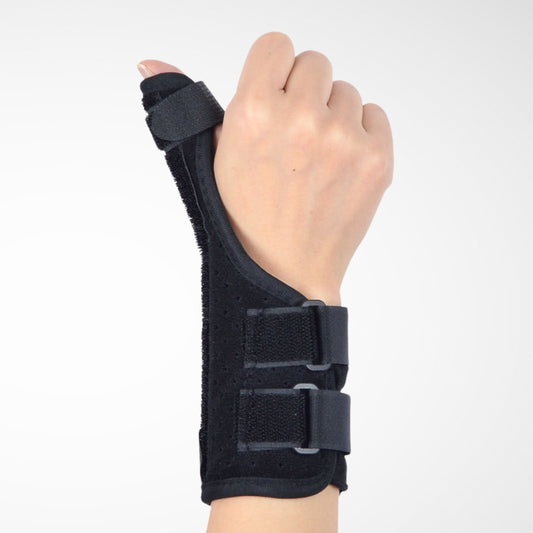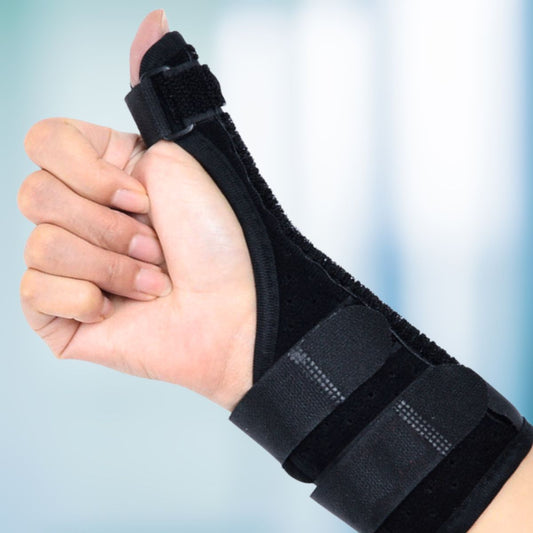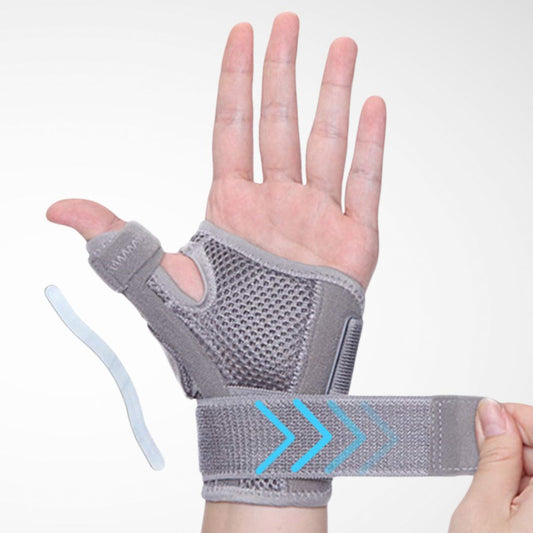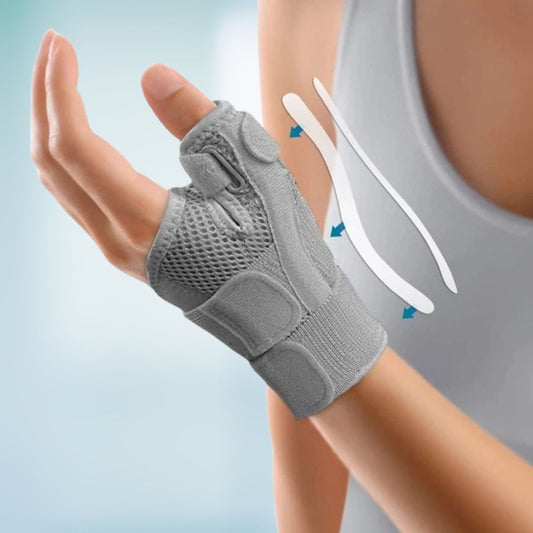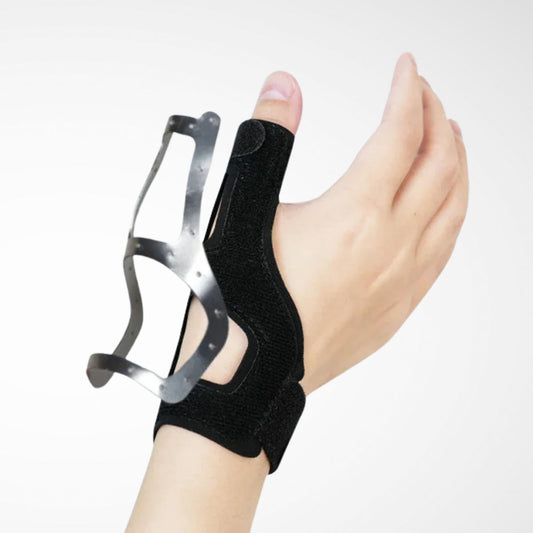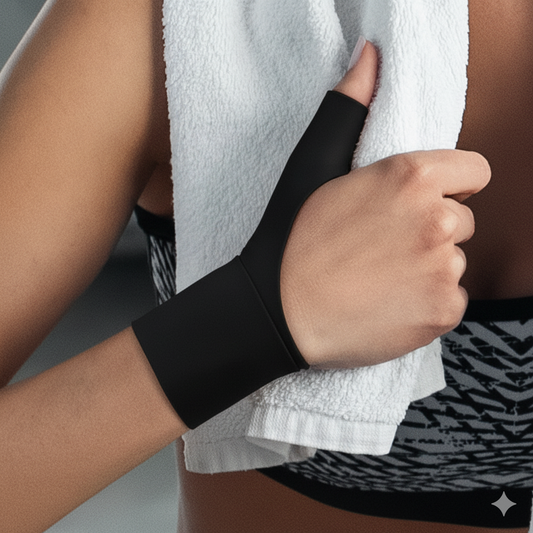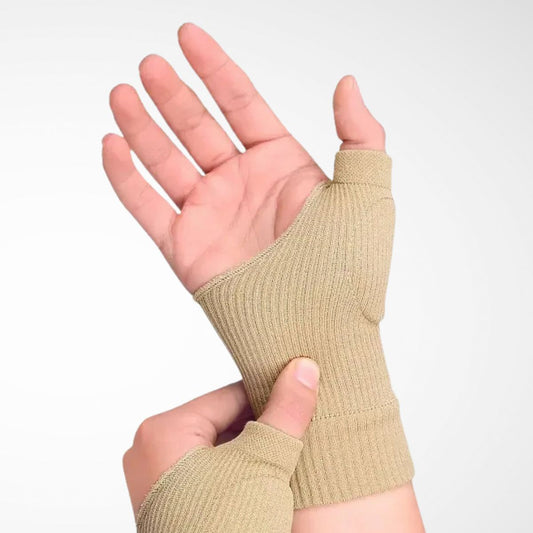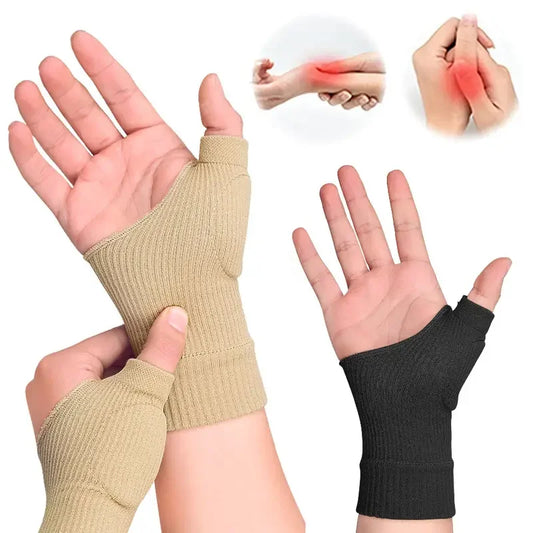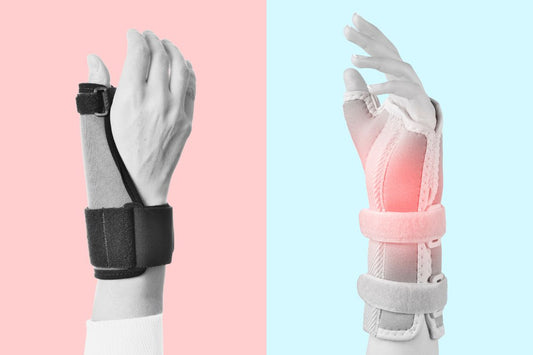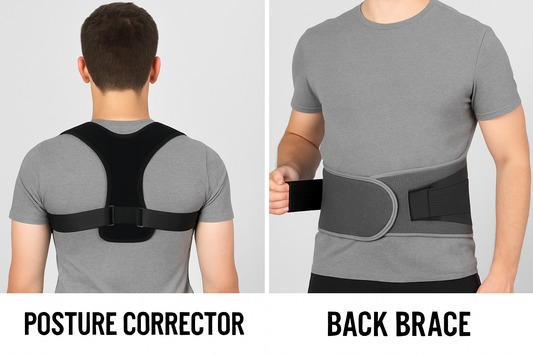A thumb sprain can be deceptively painful—limiting everything from gripping a coffee cup to typing or lifting objects. Whether it’s from a sports injury, a fall, or repetitive stress, the result is the same: discomfort, reduced motion, and a need for support. But at what point do you actually need a thumb sprain brace? And how do you choose the right one?
In this guide, we’ll walk you through when a brace is recommended, what symptoms to look for, and how to pick the most suitable option for your needs.

What Is a Thumb Sprain?
A thumb sprain happens when the ligaments that support the thumb joint are stretched beyond their normal range or torn. These ligaments are tough bands of connective tissue that stabilize the joints and help control movement. In the thumb, the most commonly injured ligament is the ulnar collateral ligament (UCL), located at the base of the thumb near the web of the hand.
Thumb sprains typically occur from:
- Falling onto an outstretched hand
- Sports-related injuries (especially in skiing, basketball, or football)
- Repetitive strain from overuse or prolonged gripping
- Sudden impact or hyperextension of the thumb
The severity of a thumb sprain is categorized into three grades, based on the degree of ligament damage:
- Grade 1 (Mild): The ligament is overstretched but not torn. You may experience minor pain, swelling, and stiffness, but thumb function is usually preserved.
- Grade 2 (Moderate): A partial tear occurs in the ligament, causing more noticeable swelling, bruising, and reduced grip strength. Pain is moderate, and thumb stability may be compromised.
- Grade 3 (Severe): The ligament is completely torn or ruptured. Swelling and bruising are significant, and the thumb may feel unstable or difficult to move. This type of sprain often requires a brace, prolonged immobilization, and in some cases, surgical repair.
Thumb sprains are sometimes confused with fractures or tendon injuries, so a proper diagnosis—often involving physical examination and imaging like X-rays—is essential. Without appropriate treatment, even a mild thumb sprain can develop into chronic instability or long-term joint problems.
That’s why recognizing early signs and taking action—such as using a thumb sprain brace—can make a major difference in both pain management and long-term recovery.
When Do You Need a Thumb Sprain Brace?
Not every thumb injury requires a brace, but certain symptoms are signs that support could be helpful:
- Swelling or bruising at the base of the thumb
- Pain when pinching, gripping, or rotating the thumb
- Instability or looseness in the thumb joint
- Recurring discomfort during activities like writing or lifting
- Previous thumb injuries or history of repetitive strain
If these symptoms persist for more than a few days—or if your thumb feels unstable—using a brace can help protect the joint, reduce inflammation, and speed up recovery.
Benefits of Wearing a Thumb Sprain Brace
A thumb sprain brace, often referred to as a thumb spica splint, serves multiple purposes:
- Immobilization: Keeps the thumb in a neutral position to prevent further strain on the ligament.
- Compression: Helps reduce swelling and support circulation for healing.
- Support: Prevents excessive movement during recovery, especially for Grade II or Grade III sprains.
- Protection: Minimizes the risk of re-injury during daily tasks or sports.
Some braces even allow for light functional use—supporting the thumb while leaving the fingers free for motion.
How to Choose the Right Thumb Sprain Brace
The best thumb sprain brace depends on your specific needs. Here’s what to consider:
-
Level of Support
Look for braces with metal or aluminum splints if you need firm immobilization. These are ideal for moderate to severe sprains or post-operative recovery.
For milder injuries or daytime use, a flexible neoprene or Lycra brace may offer enough compression and comfort. -
Adjustability
Straps and hook-and-loop closures let you fine-tune fit and compression. A snug fit ensures better support without cutting off circulation. -
Breathability & Material
Opt for materials like Lycra or breathable neoprene, especially if you’ll be wearing it all day. Moisture-wicking fabric can help reduce discomfort from sweat. -
Left or Right Hand Compatibility
Some braces are ambidextrous, while others are hand-specific. Always double-check before buying.
Recovery Tips While Wearing a Brace
Wearing a brace is just one part of recovery. Combine it with the following steps for better results:
- Rest: Avoid activities that aggravate the injury.
- Ice: Apply ice for 15–20 minutes a few times a day for the first 48 hours.
- Elevation: Keep your hand raised above heart level to reduce swelling.
- Gentle Movement: Once cleared by your doctor, incorporate light thumb exercises to restore strength and flexibility.
For severe cases or ongoing instability, consult a healthcare provider—some sprains, especially Grade III, may require imaging or surgical correction.
In Summary...
A thumb sprain might not sound serious at first, but it can have a surprising impact on your ability to perform everyday tasks — from opening a jar to typing or simply holding your phone. These injuries range from mild ligament stretches to complete tears, and understanding what grade of sprain you have is key to choosing the right course of treatment.
If you’re dealing with swelling, pain at the base of your thumb, or reduced mobility after a fall or awkward movement, it’s worth paying attention. Early intervention with rest, compression, and possibly a supportive thumb brace can make a major difference in your recovery. More severe cases may require immobilization, physical therapy, or even medical imaging to rule out fractures.
For those who skimmed: don’t ignore persistent thumb pain. It may just be a minor sprain — or it could develop into something more chronic if left untreated. Listen to your body, act early, and give your thumb the support it needs to heal properly.
Need a brace that works with your lifestyle? Explore our Thumb Spica Splint collection to find one that fits you best.


